- Home
- Gary Paulsen
How Angel Peterson Got His Name Page 6
How Angel Peterson Got His Name Read online
Page 6
Except that Orvis didn't go.
As the bear tried to push him out Orvis grabbed a back leg and held on. (“I looked up and through the haze I saw the girls watching,” he told me later.) This new tactic surprised the bear and he danced back into the center of the ring.
Dragging Orvis back with him. Which could be a good thing, as Orvis thought much, much later. Or a very, very bad thing, as Orvis thought at the moment.
He was still in the ring and I heard somebody say, “The kid's made twenty seconds.”
For a beat—actually it was three seconds; I had started counting, thinking I might somehow get my quarters back—the bear looked down, as if studying him, at Orvis hanging on to his back leg.
Then the bear bent down and, using both paws, picked Orvis up, fashioned him into something like a ball and shot-putted him out of the ring.
Or tried to.
Just as Orvis was leaving the bear's paws his hand reached back and grabbed a chunk of fur on the bear's shoulder and hung on. Orvis swung up and over in a tight arc and landed on top of the bear's head.
Big mistake, I thought.
“Thirty-five seconds,” the same man yelled, and then they all began chanting, “Thirty-six, thirty-seven, thirty-eight …” And I looked over and saw that the girls weren't giggling any longer, and they were counting too. “… Thirty-nine, forty …”
For the bear, having Orvis land on his head was the last straw, and what followed were the longest twenty seconds in Orvis's life.
The bear bundled Orvis into a ball and virtually dribbled him around the ring, batting him back and forth, flipping him in the air like a toy, catching him, dropping him to the ground and flipping him up again, at one point sitting on him while he braided Orvis's legs together. Orvis wouldn't admit it later but I swore that, girls or no girls, at one point he tried to crawl out of the ring.
But the bear dragged him back and kept working on him until finally the trainer, pulling on the leash, got him off Orvis and the man next to me yelled, “He made it! Give the kid twenty-five dollars!” and we were all cheering and the girls were jumping up and down and waving and even Bruno looked happy as the trainer gave him a Coke.
The trainer and I pulled Orvis onto a stool in the corner and wiped the dust out of his eyes and the trainer gave him a towel to use to clean himself up a little. Orvis looked as if he'd been pulled through a knothole backward. Then the trainer got out some bandages and we started covering the scrapes and minor cuts from hitting various things around the ring, like the floor, and the corner posts, and the floor, and again the floor. Then the trainer gave Orvis two tens and a five and right then the girls came up to him.
“That was great—you were great!” they said, surrounding him, and they smiled and laughed and they were laughing with and not at him but it didn't matter. He didn't say a word, couldn't say a word, and they walked off shaking their heads and Bruno, I swear, put out a paw and gently ruffled the hair on Orvis's head.
“Nice girls,” the trainer said, but Orvis was just staring down at the floor, his head wobbling only a little as he tried to focus on his feet. Then he looked up at me and in a plaintive little puppy dog voice he asked:
“Wasn't I wearing shoes when we came?”
We had to make our own skateboards.
I know that sounds ridiculous but there was no such thing then.
We took a three-foot-long piece of two-by-six board, hopefully with no knot in the middle because—as Wayne found out when he tried a small jump at near-terminal velocity—the board will break where the knot is if you come down on it hard. We nailed skate wheels at each end with roofing nails. Roller skates were these god-awful four-wheeled metal monster things that you clamped to your shoes with a wrench called a skate key—a lot of fun if you were wearing tennis shoes, or, as we called them then, PF Flyers, the brand name. There were wonderful cartoon ads in comic books and Boys' Life magazine about how a boy could run fast and do heroic things, like warn people of a flood or run to save a train by telling the engineer the bridge was out, and all because he was wearing PF Flyers.
The skates had miserable bearings that filled with sand very fast and the only good thing about them was that they came apart easily and had little holes where you could drive the roofing nails into the wood.
And so, a skateboard.
At first we tried to nail a box to one end and make a kind of scooter, but that almost always blew up in our faces when we'd hit a bump and wind up wearing the box over our heads.
Now, it's one thing to have a skateboard—it's something else to have a place to use it. This is obviously still a problem, judging by the numbers of boys destroying their groins on handrails. Back then there was no such thing as a skateboard park, there were no malls with large parking lots, and sidewalks were full of people and were badly cracked and broken from frost heaves anyway. That left just one place.
The streets.
We spent most of our time in the summer skateboarding in traffic, or hopefully in and out of traffic, and that led to what we called hitching.
There we were on the boards, and cars were going by, and it was just a matter of time before one of us grabbed on to one of the car bumpers and hitched a ride.
We thought we were being clever but it's difficult to describe just how stupid this was; the cars weighed about a ton, we weighed about a hundred pounds, the cars were made of steel, we were made of flesh—or, as Alan said, dumb meat—the cars couldn't feel pain, we could, the cars could go fast….
And we wanted to go fast. We would grab bumpers and crouch down so the drivers couldn't see us, because there were no outside mirrors then on cars, and most trunks humped up and blocked any view of the back end of the car from the rearview mirror inside. We'd ride a block, then two—sometimes four or five blocks across our small town.
And if one guy went two blocks, naturally somebody else had to do three, or five, or seven….
Which is how Wayne came to establish the distance record for skateboarding.
Well, there came a Saturday morning in August when the sun was hot and the sky was clear and blue and Orvis pulled a classic double right in front of us. We were standing on a corner, our scabby boards hanging at our sides, when Orvis jumped out, caught a Hudson (a favorite car because it had a huge humped trunk and tiny rear window), hitched half a block while we watched, let go of the Hudson and, still coasting in a crouch, caught a '51 Buick coming back toward us and wheeled to a standing stop right in front of us—an absolutely perfect double hitch.
“Big deal,” Wayne said. He was still smarting over the fact that Orvis had won twenty-five dollars with the bear, and Wayne needed money because he wanted to buy a new bow before bow-hunting deer season. “Watch this.”
And he picked a car going by, crouched down, and grabbed on. We watched him leave, heading into the distance. We were on the edge of town and in moments he was out of sight, moving down the highway and around a curve into the country.
We waited, and waited, and finally we hitched back into town and went to the drugstore to have Coke glasses filled with ice cream covered with chocolate sauce and peanuts which were called, I swear, Little Dicks. There was a sign that we could not look at without smiling that read:
LITTLE DICKS 15 CENTS
Then we hitched back out to the edge of town by Black Hill. They had recently asphalted the hill road for about an eighth of a mile and we were learning to kind of lie back on our boards and race each other down the hill. It was a crude attempt at what would later be called luge racing and would have been a lot of fun except that at the bottom of the hill the road was coarse gravel and at high speed it was like running into a giant electric belt sander.
We had been there an hour or so and were comparing road rashes when Wayne appeared at the top of the hill and whipped down into the gravel next to us.
“I went to Hutchinson,” he said, “and back.”
Hutchinson was a town seven miles away. He had only been gone two hours
or so.
“There's no way,” Alan said, “that you could have hitched the distance to Hutchinson and back in two hours.”
“Yeah, really. I took the car you saw me with all the way over and hung around and had a Coke and then caught a chicken truck back. Here, smell my arm.”
He did smell like chicken manure, but even so, fourteen miles down a highway on a skate-board …
I figured he hitchhiked back and caught a ride on a chicken truck. Orvis thought he just went a little way out of town and then hitchhiked back.
But somebody on the sidewalk in Hutchinson had taken a picture of him catching the back end of the chicken truck. In the background is a perfectly clear picture of Hutchinson Hardware.
And because Wayne has the worst luck in the world and fame always has a price, the picture appeared on the front page of the Hutchinson Clarion under the headline:
WILD KIDS CATCH WILD RIDES
Wayne's father saw the paper and took Wayne and his skateboard out into the garage and broke the skateboard. Wayne swore it was over his head but there wasn't a mark there, while he had trouble sitting down for nearly a week.
But he still has the record. Fourteen miles.
To understand what might have been the first bungee jump you have to understand my cousin Harris.
I wrote about him in Harris and Me—how he discovered rodeo, and Tarzan, and tried to make a motorcycle with a bicycle and a gasoline-powered washing machine motor, which almost worked until he accidentally tried to clear two acres of brush at the end of the driveway with his body.
The thing is, Harris believed, completely, in himself. Whether it was fighting the pet lynx or diving into the pigpen, which he pretended was a fort full of “commie bastards,” he felt he was absolutely unable to fail.
Even when he did fail, he thought he was successful.
The bungee jumping came about because Harris's father had to change the tires on their only tractor.
The tubes in the back tires were shot and his father pulled them out and replaced them. While the tires wouldn't hold air, they could still be used for other things.
Inner tubes then were made of pure rubber and were wonderfully elastic. You could carefully cut strips out of a car inner tube about an inch wide and a foot and a half long and make a great slingshot that would zing a round rock fast enough to break a bottle at twenty-five yards or put a heck of a welt on Wayne's butt if he had just shot you in the butt with a small rock.
But something as big as tractor inner tubes, with their thicker rubber and large size, fairly screamed for some greater use.
“We could make a really big slingshot,” Harris said. “Tie it between two trees and shoot ourselves across the yard. Maybe into the sky.”
“No,” I said, shaking my head, “we'd have to come down.”
“Hmmm.” He thought a moment and then smiled. “That's it.”
“What is?”
“Coming down. We can tie a rope to the inner tube and then another rope under our armpits and we'll get a good bounce out of it. It'll be just like them parachute soldiers when they jumped on the commie bastards.” Harris's concept of history was a little blurred. He knew there had been a Second World War but the country right then was in the middle of the communist scare and he mixed the two up.
I was ten and he was eight, and I already had my healthy curiosity. “How will you get a good bounce out of that?”
“Simple, you gooner. We'll tie it to the top of the barn roof and jump out the hayloft door.”
And it was about that easy to set it up. There was a pulley at the peak of the barn for pulling hay up inside off hayracks, and Harris tied the rope to the pulley, then tied the other end to the inner tubes. He used both of them, side by side, and pulled the long part of the rope up to the peak of the roof, just outside the loft door.
The inner tubes were even with his head, where he stood up in the big barn door opening,and he took another piece of old rope, made two loops through the inner tubes and tucked it up into his armpits, yelled something unrepeatable and, with complete confidence, jumped out the hayloft door.
The bounce part worked. I was standing slightly to the side to watch and I can vouch for that, although the rope was just a bit too long.
He went down like a shot, both inner tubes stretching nicely, and just as his face slapped the dirt they retracted and snapped him back up into the air.
Except he didn't come straight back up. He had gone down at a slight angle and there was a low eave over the milk room at that end of the barn that stuck out about two feet.
Harris came up under the eave and smashed into a wasps' nest.
The wasps had absolutely no tolerance for bungee jumping and they swarmed on him as he headed back down for the ground, hit once more, then snapped back up and cleared the milk room eave, out into the open air, trailed by a swarm of wasps that had decided to use him for target practice.
“Cut the rope! Cut the rope!” he screamed, but I had no knife and had to untie the end he had tied to the barn and my ability to untie the rope was greatly handicapped by the fact that I was laughing hysterically.
“Cut the damn rope!”
Finally I got it loose and he landed on the ground in a buzzing, screaming heap and started running for the stock tank to jump in the water but he was still affixed to the inner tubes and the rope became entangled, so just as he got up a good head of steam, about eight feet short of the stock tank the rope caught, stretched the tubes and yanked him back a good ten feet, flat on his butt, where the wasps got him again.
“Them parachute soldiers really got guts,” he said later, as we were dabbing mud on his swollen, wasp-stung face. “I wouldn't do that again even without the wasps.”
Along with all the extreme sports I've described, there were attempts at stunts and sports that never quite jelled.
Wayne decided to crawl into a box with dynamite and set it off like the daredevils at the fair except that we didn't have any dynamite (a really good thing) so he crawled into an old refrigerator carton and we used three full-force M-80 fire-crackers with the fuses wrapped to go off at the same time. The box didn't blow up at all, and the only result was that for two weeks every time you asked Wayne a question he would say, “What? What?” and he kept slapping at mosquitoes buzzing around his head when there weren't any mosquitoes.
Orvis decided to take a try at the hoop of fire and against our advice made a wooden frame covered with burlap (“Just like they do at the fair,” he said), which he soaked in kerosene. We stood by with buckets of water as Wayne lit the frame and Orvis backed off and got a good run at it before jumping his bike from the ramp through the center of the fire. It looked spectacular, with flames and smoke flying after him, and it could have been worse—his hair was slow to come back, but he had a pretty good crop of fuzz inside a month. The sad thing was that he actually got through the hoop when there were no girls around and Alan, who was standing by with the Brownie camera, forgot to take the picture.
Then there was Angel of the skis again with an army surplus full-sized parachute and his attempt to use it as a sail with ice skates on Lake Oosshta, which worked fine until a gust of wind pulled him off his feet and the chute rope that was knotted around his stomach slipped down to catch one leg and he was pulled some four miles across the lake, backward on his stomach. And then during the summer Angel tried to use the parachute as a sail on his bicycle, only to have a gust flip him over and drag him and his bike a quarter mile down a gravel road. Then there was Angel's attempt to use the parachute as a sail on a borrowed canoe, only to have a gust flip him over and tangle him in the shroud lines and almost drown him. Then, at last, there was Angel selling the chute to the neighbors, who used it for a yard awning.
And then finally, Wayne again, who read a book that said the hero had made a diving bell by using a bucket over his head and some kind of hose arrangement to keep air coming from a tire pump. Even with Orvis pumping as hard as he could, Wayne nearly drowned u
nder the Fourth Street Bridge on the Mud River, where he swears to this day that he felt a shark brush past him in the dark water. He always says that: “It brushed past me in the dark water.” There are of course no freshwater sharks in the Mud River in northern Minnesota—although the water is dark enough, being mostly mud—but you can't tell Wayne that, just as you couldn't tell Orvis he couldn't beat the bear or Angel he couldn't beat the speed record on skis or Emil he couldn't fly the target kite because, like Harris, we also believed in ourselves and what we could do or thought we could do. It didn't matter that it hadn't been done before. It was still worth trying.
It was, always, worth the try.
GARY PAULSEN is the distinguished author of many critically acclaimed books for young people, including three Newbery Honor books: The Winter Room, Hatchet and Dogsong. His novel The Haymeadow received the Western Writers of America Golden Spur Award. Among his newest Random House books are Caught by the Sea: My Life on Boats, Guts: The True Stories Behind Hatchet and the Brian Books, The Beet Fields: Memories of a Sixteenth Summer, Alida's Song (a companion to The Cookcamp), Soldier's Heart, The Transall Saga, My Life in Dog Years, Sarny: A Life Remembered (a companion to Nightjohn), Brian's Return and Brian's Winter (companions to Hatchet), Father Water, Mother Woods: Essays on Fishing and Hunting in the North Woods and five books about Francis Tucket's adventures in the Old West. Gary Paulsen has also published fiction and nonfiction for adults, as well as picture books illustrated by his wife, the painter Ruth Wright Paulsen. Their most recent book is Canoe Days. The Paulsens live in New Mexico and on the Pacific Ocean.
Published by Yearling, an imprint of Random House Children's Books a division of Random House, Inc., New York
Copyright © 2003 by Gary Paulsen
All rights reserved. No part of this book may be reproduced or transmitted in any form or by any means, electronic or mechanical, including photocopying, recording, or by any information storage and retrieval system, without the written permission of the publisher, except where permitted by law. For information address Wendy Lamb Books.

 Hatchet br-1
Hatchet br-1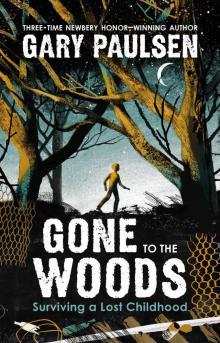 Gone to the Woods
Gone to the Woods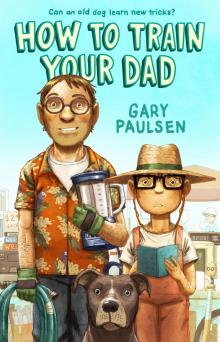 How to Train Your Dad
How to Train Your Dad The Haymeadow
The Haymeadow Amos Binder, Secret Agent
Amos Binder, Secret Agent The River br-2
The River br-2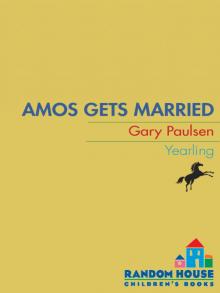 Amos Gets Married
Amos Gets Married Father Water, Mother Woods
Father Water, Mother Woods Dunc and the Scam Artists
Dunc and the Scam Artists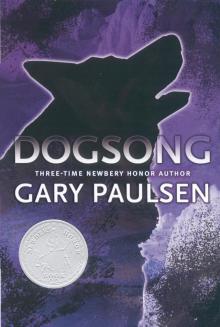 Dogsong
Dogsong Alida's Song
Alida's Song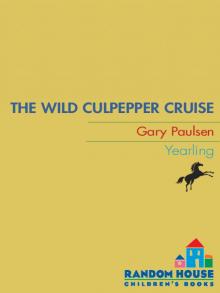 The Wild Culpepper Cruise
The Wild Culpepper Cruise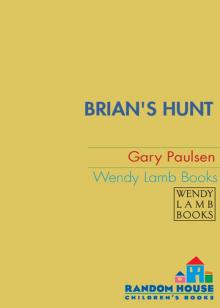 Brian's Hunt
Brian's Hunt Woods Runner
Woods Runner Dunc and Amos on Thin Ice
Dunc and Amos on Thin Ice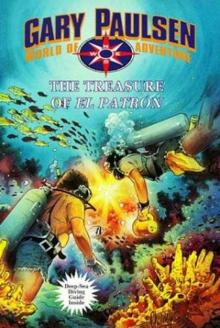 The Treasure of El Patron
The Treasure of El Patron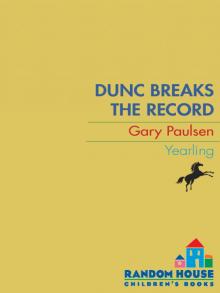 Dunc Breaks the Record
Dunc Breaks the Record Harris and Me
Harris and Me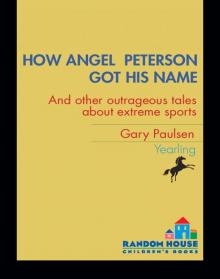 How Angel Peterson Got His Name
How Angel Peterson Got His Name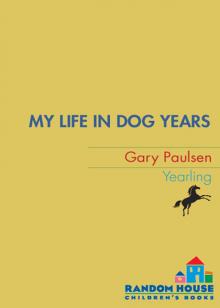 My Life in Dog Years
My Life in Dog Years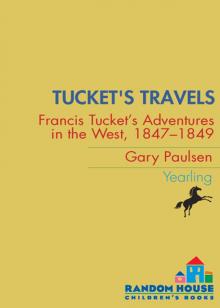 Tucket's Travels
Tucket's Travels Canyons
Canyons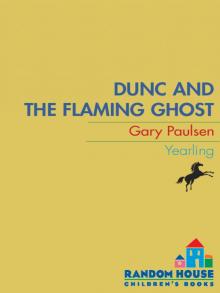 Dunc and the Flaming Ghost
Dunc and the Flaming Ghost The Schernoff Discoveries
The Schernoff Discoveries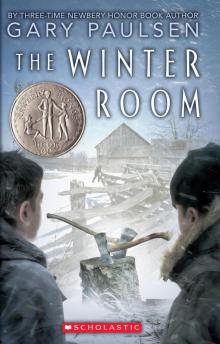 The Winter Room
The Winter Room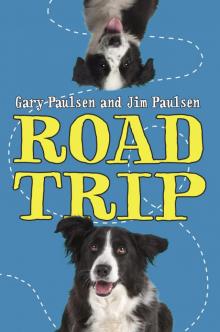 Road Trip
Road Trip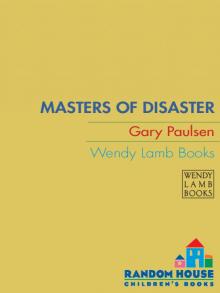 Masters of Disaster
Masters of Disaster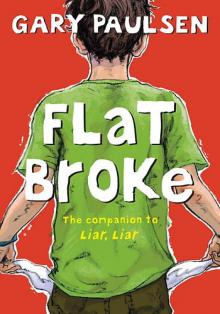 Flat Broke
Flat Broke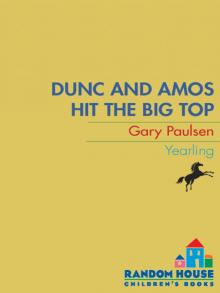 Dunc and Amos Hit the Big Top
Dunc and Amos Hit the Big Top Time Benders
Time Benders Caught by the Sea
Caught by the Sea Dancing Carl
Dancing Carl The Seventh Crystal
The Seventh Crystal The Boy Who Owned the School
The Boy Who Owned the School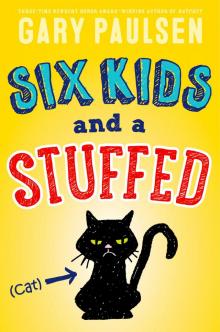 Six Kids and a Stuffed Cat
Six Kids and a Stuffed Cat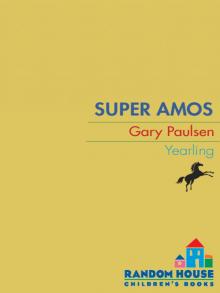 Super Amos
Super Amos Dunc and the Greased Sticks of Doom
Dunc and the Greased Sticks of Doom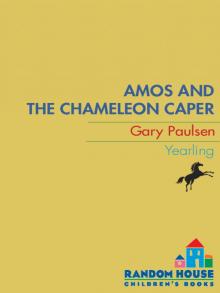 Amos and the Chameleon Caper
Amos and the Chameleon Caper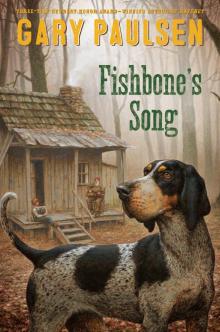 Fishbone's Song
Fishbone's Song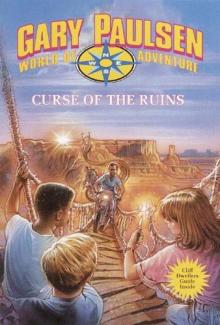 Curse of the Ruins
Curse of the Ruins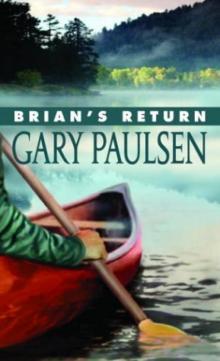 Brian's Return br-4
Brian's Return br-4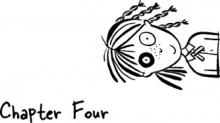 Molly McGinty Has a Really Good Day
Molly McGinty Has a Really Good Day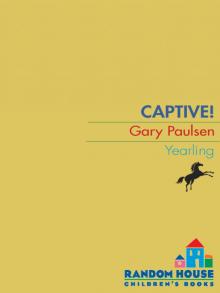 Captive!
Captive! Culpepper's Cannon
Culpepper's Cannon The Car
The Car Puppies, Dogs, and Blue Northers
Puppies, Dogs, and Blue Northers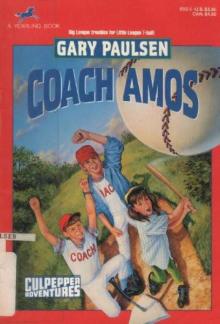 Coach Amos
Coach Amos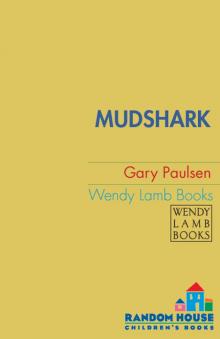 Mudshark
Mudshark The White Fox Chronicles
The White Fox Chronicles Dunc and Amos Meet the Slasher
Dunc and Amos Meet the Slasher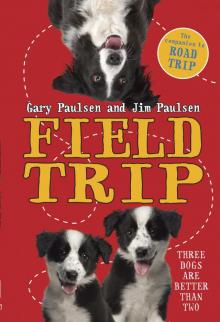 Field Trip
Field Trip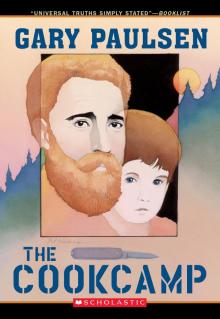 The Cookcamp
The Cookcamp Crush
Crush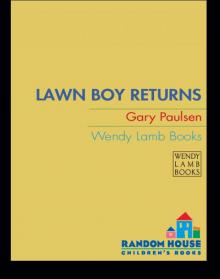 Lawn Boy Returns
Lawn Boy Returns Liar, Liar k-1
Liar, Liar k-1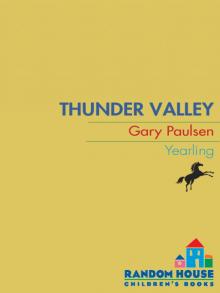 Thunder Valley
Thunder Valley The Tent
The Tent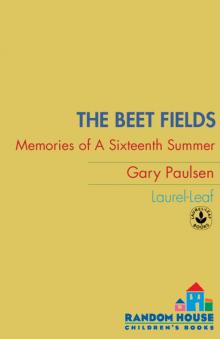 The Beet Fields
The Beet Fields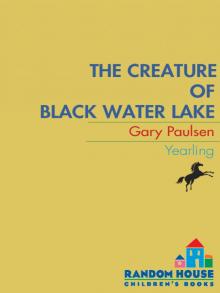 The Creature of Black Water Lake
The Creature of Black Water Lake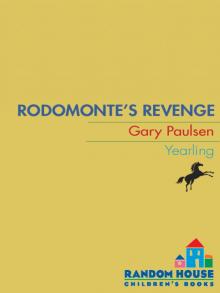 Rodomonte's Revenge
Rodomonte's Revenge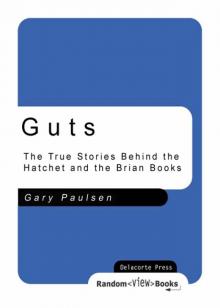 Guts
Guts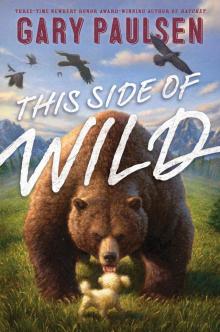 This Side of Wild
This Side of Wild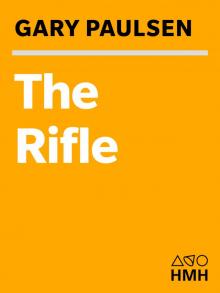 The Rifle
The Rifle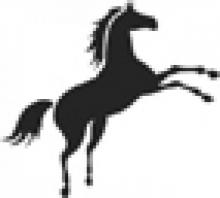 The Time Hackers
The Time Hackers Amos Goes Bananas
Amos Goes Bananas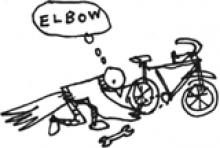 The Amazing Life of Birds
The Amazing Life of Birds Dunc's Undercover Christmas
Dunc's Undercover Christmas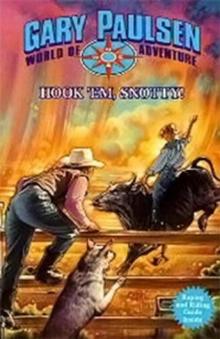 Hook 'Em Snotty
Hook 'Em Snotty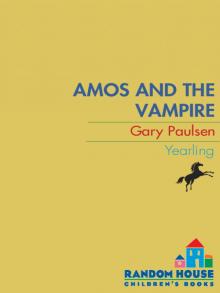 Amos and the Vampire
Amos and the Vampire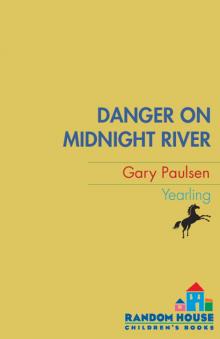 Danger on Midnight River
Danger on Midnight River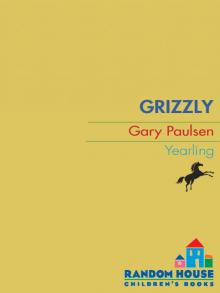 Grizzly
Grizzly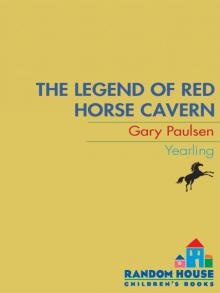 The Legend of Red Horse Cavern
The Legend of Red Horse Cavern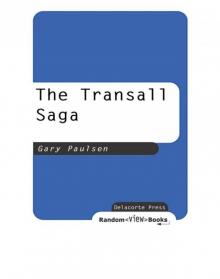 The Transall Saga
The Transall Saga Lawn Boy
Lawn Boy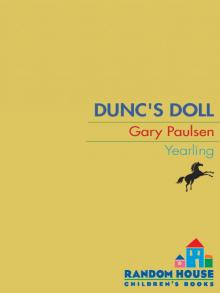 The Case of Dunc's Doll
The Case of Dunc's Doll A Christmas Sonata
A Christmas Sonata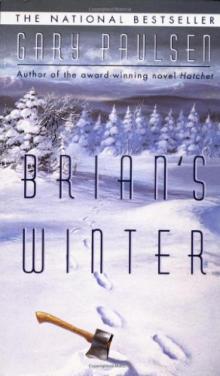 Brian's Winter br-3
Brian's Winter br-3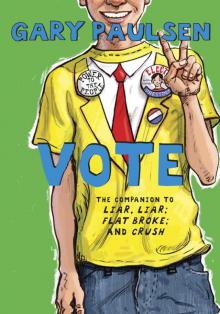 Vote
Vote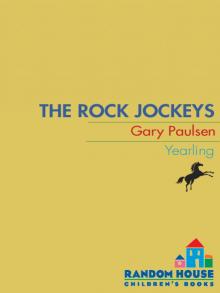 The Rock Jockeys
The Rock Jockeys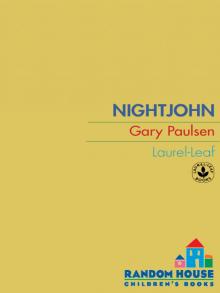 Nightjohn
Nightjohn Escape from Fire Mountain
Escape from Fire Mountain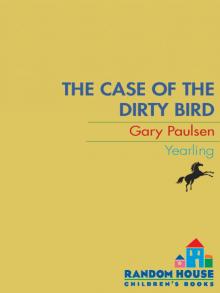 The Case of the Dirty Bird
The Case of the Dirty Bird Brian's Winter
Brian's Winter Amos's Killer Concert Caper
Amos's Killer Concert Caper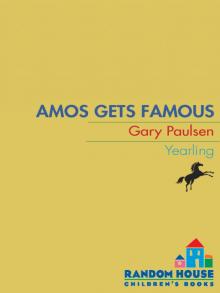 Amos Gets Famous
Amos Gets Famous Brian's Return
Brian's Return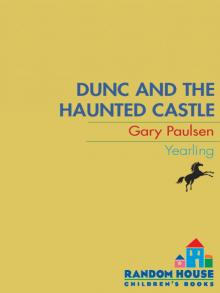 Dunc and the Haunted Castle
Dunc and the Haunted Castle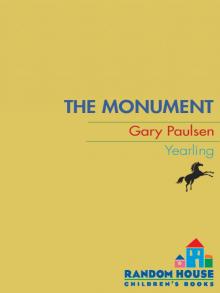 The Monument
The Monument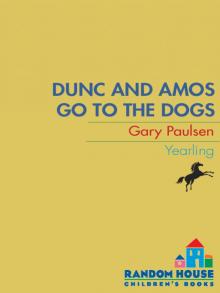 Dunc and Amos Go to the Dogs
Dunc and Amos Go to the Dogs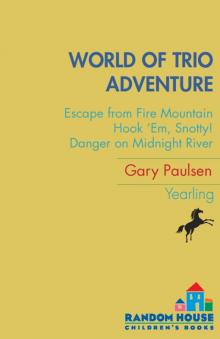 World of Adventure Trio
World of Adventure Trio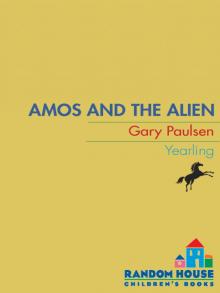 Amos and the Alien
Amos and the Alien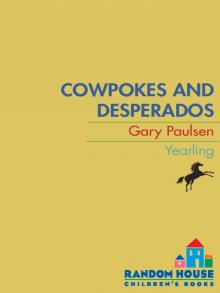 Cowpokes and Desperadoes
Cowpokes and Desperadoes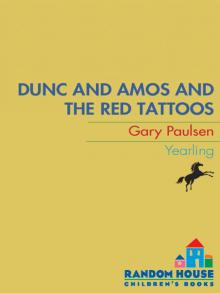 Dunc and Amos and the Red Tattoos
Dunc and Amos and the Red Tattoos Dunc's Dump
Dunc's Dump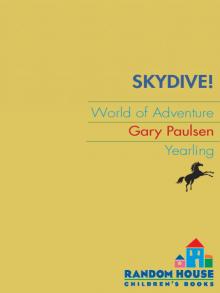 Skydive
Skydive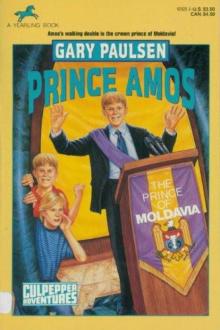 Prince Amos
Prince Amos The Gorgon Slayer
The Gorgon Slayer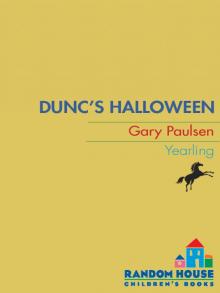 Dunc's Halloween
Dunc's Halloween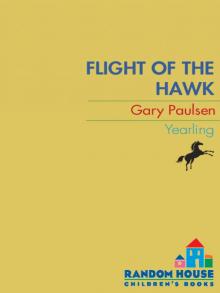 Flight of the Hawk
Flight of the Hawk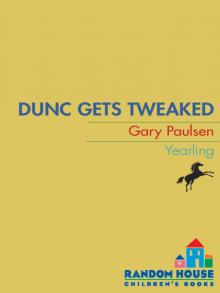 Dunc Gets Tweaked
Dunc Gets Tweaked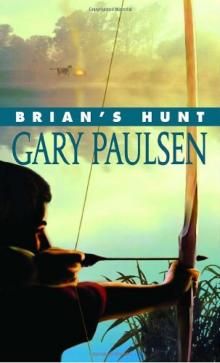 Brian's Hunt br-5
Brian's Hunt br-5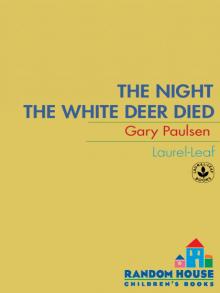 The Night the White Deer Died
The Night the White Deer Died